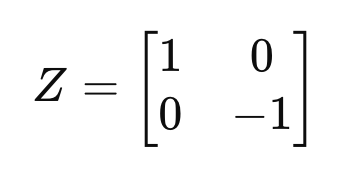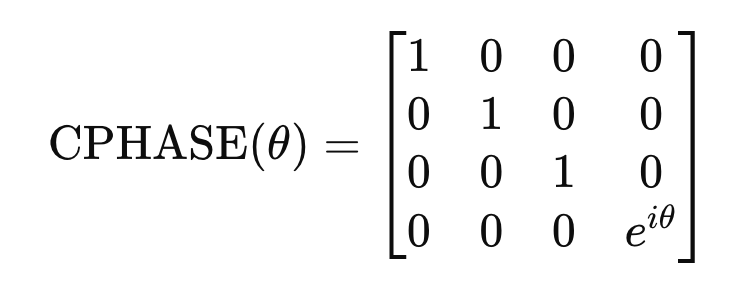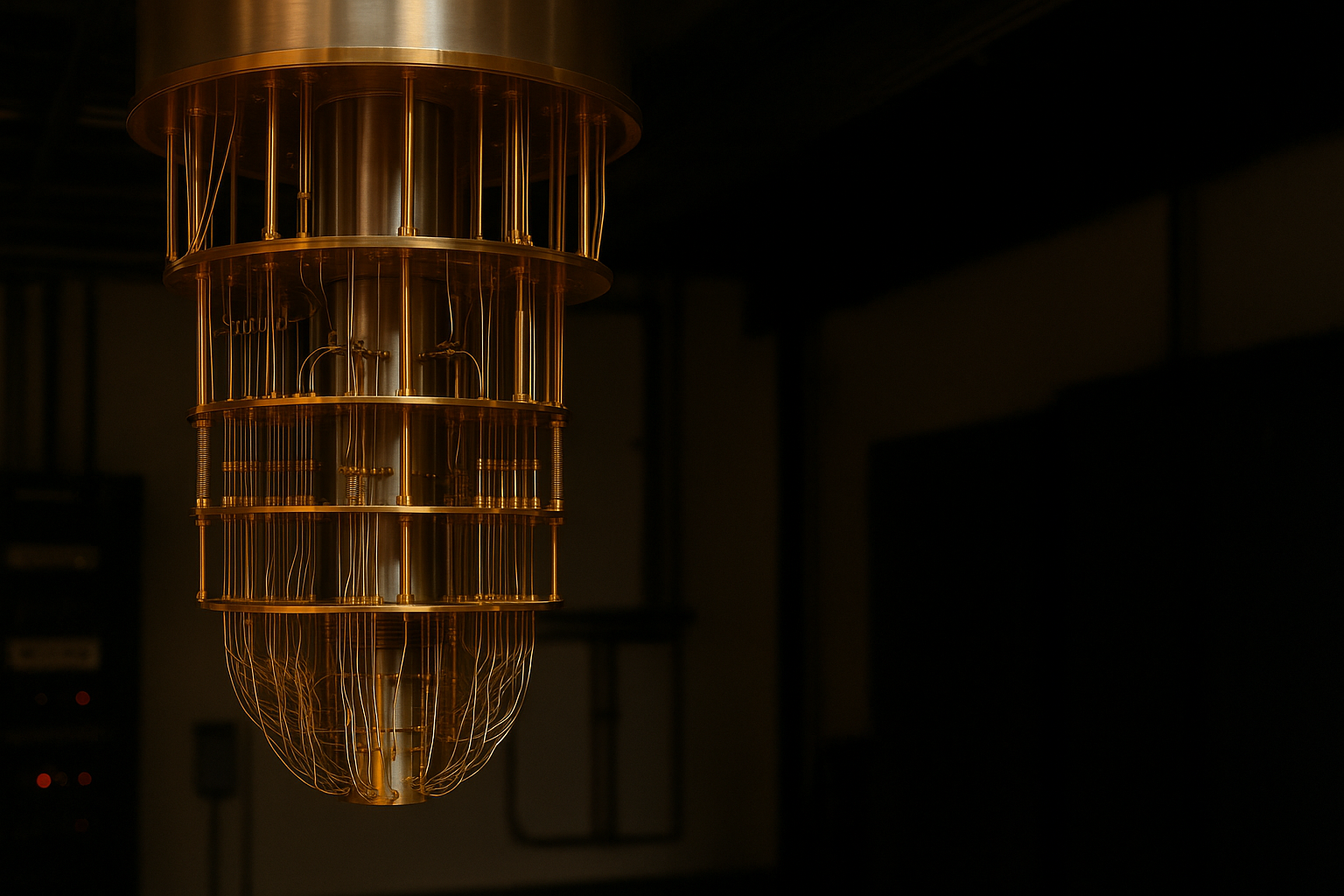Introduction
Quantum computing is a rapidly growing field that promises to revolutionize computing by utilizing the principles of quantum mechanics. At the heart of quantum computing lies the concept of quantum gates. These gates are fundamental operations that manipulate quantum bits (qubits), the building blocks of quantum circuits, in ways that classical gates manipulate classical bits. Understanding quantum gates is crucial for anyone seeking to learn or work with quantum computing, as they are the primary means of controlling quantum information.
In this article, we will explore the fundamental principles behind quantum gates, their types, how they work, and their role in quantum computing. We will also delve into how these gates are implemented in quantum circuits and how they differ from classical gates.
Table of Contents
- What Are Quantum Gates?
- Key Differences Between Classical and Quantum Gates
- Types of Quantum Gates
- 3.1 Pauli Gates (X, Y, Z)
- 3.2 Hadamard Gate (H)
- 3.3 Phase Gates (S, T)
- 3.4 CNOT Gate
- 3.5 Toffoli Gate (CCNOT)
- 3.6 SWAP Gate
- 3.7 Controlled-Phase (CPHASE) Gate
- 3.8 Rotation Gates (Rx, Ry, Rz)
- Quantum Circuit Representation
- Quantum Gate Operations: Superposition, Entanglement, and Interference
- The Matrix Representation of Quantum Gates
- How Quantum Gates Are Used in Quantum Algorithms
- Implementing Quantum Gates Using Qiskit
- Quantum Gates and Quantum Error Correction
- Advanced Quantum Gates and Their Applications
- Quantum Gate Visualization Tools
- Resources for Further Learning
- Conclusion
1. What Are Quantum Gates?
Quantum gates are the quantum analogs of classical logic gates. However, unlike classical gates, quantum gates operate on quantum bits (qubits), which can exist in a superposition of states. A quantum gate manipulates qubits by applying specific operations that transform their states. These gates perform various functions such as flipping qubits, creating superpositions, and entangling multiple qubits.
In quantum computing, quantum gates are represented by unitary matrices that act on quantum states. They modify the probability amplitudes of the qubits and enable quantum operations that leverage the principles of quantum mechanics, such as superposition and entanglement.
A quantum circuit is made up of a sequence of quantum gates. The arrangement of these gates defines the computation that the quantum computer will perform. Quantum gates are typically represented as symbols in quantum circuit diagrams, where lines represent qubits and the gates are applied along these lines.
2. Key Differences Between Classical and Quantum Gates
Classical gates operate on classical bits, which can only exist in one of two possible states: 0 or 1. These gates perform operations like NOT, AND, OR, and XOR, which output a fixed result based on the inputs.
Quantum gates, on the other hand, operate on qubits, which can be in a superposition of states. The most significant differences between classical and quantum gates include:
- Superposition: Quantum gates can create superpositions, where a qubit is in both 0 and 1 states simultaneously.
- Entanglement: Quantum gates can entangle qubits, meaning the state of one qubit becomes correlated with the state of another, regardless of the distance between them.
- Reversibility: Quantum gates are typically reversible, meaning that applying a quantum gate twice can return the system to its original state.
- Matrix Representation: While classical gates can be described by truth tables, quantum gates are represented by unitary matrices that preserve the normalization of the quantum state vector.
3. Types of Quantum Gates
There are several types of quantum gates, each of which performs a unique operation on qubits. Let’s explore the most commonly used quantum gates.
3.1 Pauli Gates (X, Y, Z)
The Pauli gates are a set of three gates that perform rotations around the axes of the Bloch sphere (a geometric representation of quantum states).
- X Gate (also known as the NOT gate): The Pauli-X gate flips the state of a qubit, turning a 0 into a 1 and vice versa. It’s similar to a classical NOT gate but operates on qubits. The matrix representation of the X gate is:

- Y Gate: The Pauli-Y gate applies a 90-degree rotation around the Y-axis of the Bloch sphere, affecting both the amplitude and the phase of the qubit. The matrix representation of the Y gate is:

- Z Gate: The Pauli-Z gate introduces a phase flip, changing the phase of the qubit without altering its state in the computational basis. The matrix representation of the Z gate is:

These gates are fundamental operations in quantum computing, and they are used in various algorithms to manipulate qubit states.
3.2 Hadamard Gate (H)
The Hadamard gate is one of the most important gates in quantum computing because it creates superposition. When applied to a qubit in the state |0⟩, it transforms the qubit into an equal superposition of |0⟩ and |1⟩. When applied to a qubit in the state |1⟩, it creates a superposition of |1⟩ and |0⟩.
The matrix representation of the Hadamard gate is: 
The Hadamard gate is critical for algorithms such as Grover’s search algorithm and Shor’s factoring algorithm, where it is used to create superpositions of different states that explore multiple possibilities simultaneously.
3.3 Phase Gates (S, T)
Phase gates are used to add a phase shift to the quantum state of a qubit.
- S Gate: The S gate, also known as the phase gate, applies a phase of π/2 to the qubit, shifting the phase of the |1⟩ state by 90 degrees. The matrix representation of the S gate is:

- T Gate: The T gate applies a phase of π/4 to the |1⟩ state, introducing a smaller phase shift than the S gate. The matrix representation of the T gate is:

Phase gates are used in quantum algorithms for introducing relative phase shifts between quantum states, a key component for interference effects in quantum circuits.
3.4 CNOT Gate
The Controlled-NOT (CNOT) gate is a two-qubit gate that performs a NOT operation on the second qubit (the target qubit) only if the first qubit (the control qubit) is in the |1⟩ state. This gate is the foundation for creating entanglement between qubits.
The matrix representation of the CNOT gate is: 
The CNOT gate is used extensively in quantum algorithms and quantum error correction, where it helps to create entangled states.
3.5 Toffoli Gate (CCNOT)
The Toffoli gate, also known as the controlled-controlled-NOT (CCNOT) gate, is a three-qubit gate that flips the third qubit (the target qubit) if and only if both the first and second qubits (the control qubits) are in the |1⟩ state.
The matrix representation of the Toffoli gate is: 
This gate is useful in reversible computing and error correction protocols.
3.6 SWAP Gate
The SWAP gate exchanges the states of two qubits. It is a two-qubit operation that swaps the quantum states between two qubits.
The matrix representation of the SWAP gate is: 
The SWAP gate is important in quantum circuits for reordering qubits and in quantum error correction.
3.7 Controlled-Phase (CPHASE) Gate
The Controlled-Phase (CPHASE) gate introduces a phase shift between the target qubit and control qubit when the control qubit is in the |1⟩ state. The matrix representation of the CPHASE gate is: 
3.8 Rotation Gates (Rx, Ry, Rz)
Rotation gates are used to rotate qubits around specific axes of the Bloch sphere. The rotation gates Rx, Ry, and Rz apply rotations around the X, Y, and Z axes, respectively.
- Rx Gate: Applies a rotation around the X-axis.
- Ry Gate: Applies a rotation around the Y-axis.
- Rz Gate: Applies a rotation around the Z-axis.
Each of these gates has a corresponding matrix representation, and they are used in quantum algorithms to modify the states of qubits by specific angles.
4. Quantum Circuit Representation
A quantum circuit is made up of quantum gates that are applied to qubits. These circuits are represented visually as a sequence of gates on horizontal lines representing qubits. A quantum circuit diagram shows the qubits as horizontal lines, and gates are applied to them as symbols placed on these lines.
Quantum circuits can be simulated and executed using platforms like Qiskit, where quantum gates are represented using the QuantumCircuit class.
5. Quantum Gate Operations: Superposition, Entanglement, and Interference
Quantum gates manipulate quantum states by performing operations like creating superposition (Hadamard gate), introducing entanglement (CNOT gate), and controlling phase shifts (Phase gates). These operations leverage the principles of quantum mechanics, enabling quantum computers to perform tasks that are infeasible for classical computers.
6. The Matrix Representation of Quantum Gates
Quantum gates are described using matrices because quantum states are vectors, and gates are linear operations on these vectors. The unitary matrix representation ensures that the probability amplitudes are preserved (i.e., the system’s total probability is always equal to 1).
7. How Quantum Gates Are Used in Quantum Algorithms
Quantum gates are used to build quantum algorithms like Grover’s search algorithm, Shor’s factoring algorithm, and quantum teleportation. These algorithms exploit the unique properties of quantum gates to solve problems much faster than classical computers.
8. Implementing Quantum Gates Using Qiskit
Qiskit is a Python library that allows you to create, simulate, and run quantum circuits. Implementing quantum gates in Qiskit involves defining quantum circuits and using built-in methods for applying gates like circuit.h(0) for the Hadamard gate or circuit.cx(0, 1) for the CNOT gate.
9. Quantum Gates and Quantum Error Correction
Quantum gates also play a role in quantum error correction. Error correction codes like the Shor code and the Steane code use quantum gates to detect and correct errors that arise from noise during quantum computations.
10. Advanced Quantum Gates and Their Applications
Advanced quantum gates like the Toffoli gate and the Fredkin gate have applications in quantum reversible computing and quantum cryptography.
11. Quantum Gate Visualization Tools
Several visualization tools, such as Bloch sphere representations and quantum circuit simulators, allow researchers and learners to see how quantum gates affect quantum states visually.
12. Resources for Further Learning
To learn more about quantum gates, quantum computing, and related topics, the following resources are recommended:
- Qiskit Documentation: Official documentation for Qiskit, which is widely used for quantum computing experiments.
- Quantum Computation and Quantum Information by Michael Nielsen and Isaac Chuang: A comprehensive textbook for quantum computing.
- IBM Quantum Experience: A platform for learning and experimenting with quantum circuits using actual quantum hardware.
13. Conclusion
Quantum gates are fundamental to the operation of quantum computers. They allow quantum states to be manipulated in ways that classical gates cannot achieve, thanks to the unique properties of quantum mechanics like superposition and entanglement. As quantum computing continues to evolve, the understanding and application of quantum gates will remain at the forefront of innovation in this exciting field.


